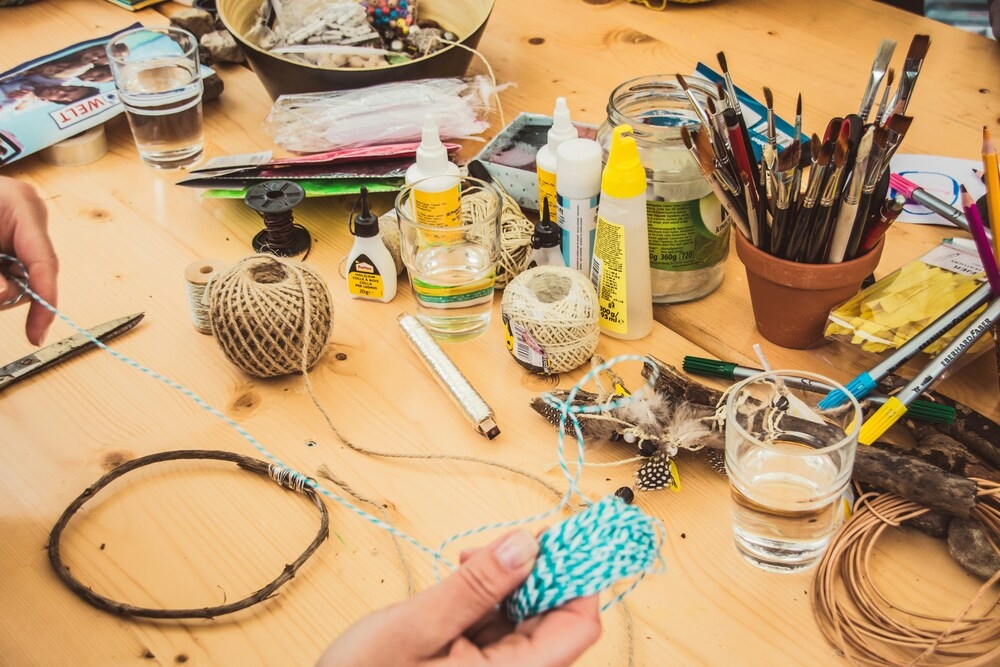Non copyright music for DIY videos
Explore how to use royalty-free music in your DIY videos. Learn how to choose and apply music legally to enhance your creations, click and transform your projects!
There's more music!
That's only the tip of the iceberg. We have many more songs, all available with our lifetime licenses:
Why you should purchase from us
Discover the simplest and most cost-effective way to secure a lifetime license – pay once and never worry about account creation or password hassles again! Our licenses are your ticket to the best music, valid for any project, forever.
Get your license now!Use our music on...
Music Plans
Pay once, use for a lifetime
You’ll never have to worry again about copyrights or claims.
Starter
Suited for personal projects and social media (Youtube not included)
$49 / forever
Buy plan- Personal projects
- Social Media
- Clients work
- Online Advertising
- TV, Cinema and Radio
Personal
Most popular
Ideal for Youtube. apps, podcast and gameplays. Unlimited downloads and channels.
$99 / forever
Buy plan- Social Media
- Youtube & Streaming
- Apps & Videogames
- Clients work
- Online Advertising
- TV, Cinema and Radio
Business
Ideal if you're a freelancer or a business. All covered, unlimited downloads and channels
$199 / forever
Buy plan- Any Possible Use Case
- Clients work
- Online Advertising
- TV, Cinema and Radio
👉No need to create an account
👉A lifetime license, forever
👉No more ‘clearing’ channels
We currently offer 241 songs from 30 different genres
Testimonials
Don't take our word for it
“I was skeptical at first but Legis Music has exceeded my expectations. Their music library is diverse and constantly updated, making it easy to find the perfect track for any project. Plus, the peace of mind that comes with that royalty-free license is priceless.”

“@legismusic has made my life as a video editor so much easier. The lifetime license is a no-brainer and the fact that I don’t have to worry about clearing channels or getting copyright strikes is a huge weight off my shoulders. The affordable cost and extensive music library make it the go-to source for all my music needs.”

“As a podcast creator, finding the right music to complement my content can be a challenge, but Legis Music has made it so easy. Their lifetime licenses are affordable and the fact that I can use the music on Spotify and Apple Music is a huge relief. A no-brainer for any podcaster.”

“I was blown away by the value offered by Legis Music's lifetime royalty-free licenses. The cost is incredibly affordable and having the peace of mind to use the music for my clients without worrying about copyright strikes is priceless. I highly recommend this to anyone in need of music for their projects.”

“It was important for me to find a cost-effective solution for my company’s music needs. Legis Music’s business plan was the perfect fit and the lifetime licenses have been a game-changer. We can now use the music for all of our projects without any worries about copyright strikes. Highly recommend to any business in need of music.”

“The quality of the music is top-notch, and the licensing terms are crystal clear, saving me from any copyright hassles.”

“Legis Music has improved the way I create content. The selection of royalty-free music is great and the quality is unbeatable. I can now add the perfect sound to my videos without any stress or added costs. Highly recommended!”

“I've been using Legis Music for my YouTube channel for the past few months, and I couldn't be happier with the service.”

“As a video game creator, having access to high-quality music for my games is crucial. @legismusic lifetime licenses are a steal and the fact that I don’t have to worry about any type of copyrights in the future is a huge relief. The extensive library makes it easy to find the perfect tracks for my games.”

“The audio quality is excellent, and I've never experienced any copyright issues since using their music. The licensing terms are transparent, which is essential for content creators like myself.”

“As a freelance producer, I need to keep costs down and Legis Music has been a huge help for me. The user-friendly platform and affordable pricing make it easy for me to access top-notch music for my clients. Anyone in need of royalty-free music should give it a shot.”

Key Takeaways
- Royalty-free music is crucial for DIY videos, as it enriches the content, enhances the viewer’s experience and avoids copyright-related legal issues.
- Copyright basics differentiate between royalty-free music, public domain and Creative Commons licenses, underlining the importance of understanding these categories to use music legally.
- Advantages of unrestricted music include legality and compliance, monetizability, creative flexibility, and protection from litigation.
- Recommended sources for finding music include the YouTube Audio Library, Free Music Archive, Incompetech, and Epidemic Sound, among others. It is crucial to evaluate the quality and relevance of the music to the project.
- Editing techniques for synchronizing music with visual content highlight the importance of sync points, the use of fade in/out and the balance between music and voice for a proper sound mix.
- Legal issues to consider highlight the importance of verifying the source of music, understanding licensing, obtaining sync rights, and maintaining documentation records.
- Additional tools and resources such as Audacity, Adobe Audition, and GarageBand, as well as online communities and forums, are essential for audio editing and sharing tips among creators.
DIY (Do It by Yourself) videos have become an invaluable source of inspiration, education and entertainment for millions of people around the world.
These videos offer step-by-step tutorials and tips on a wide range of topics, from home improvement and craft projects to cooking and technology.
A critical component that is often overlooked, but plays a key role in the success of these videos, is the music.
Music not only enriches the viewing experience, but can also significantly enhance the comprehension and enjoyment of the content presented.
It acts as a unifying element that enhances the visual narrative, sets the tone and mood of the video, and can even influence the viewer’s perception of the difficulty or enjoyment of a project.
In addition, the right background music helps to hold the viewer’s attention, thereby increasing retention and reducing the rate of video abandonment.
However, choosing music to accompany a DIY video is not as simple as selecting a popular song or your favorite track.
Copyright is a crucial consideration that all content creators must take into account to avoid legal violations that can result in video removal, monetary penalties, or even lawsuits.
Copyrighted music is subject to legal restrictions set by the copyright owner, which means that using it without permission could have serious consequences.
Royalty-free music offers a solution to this problem, allowing creators to incorporate quality music into their videos without worrying about legal complications.
This type of music can be used freely in projects and content, under certain conditions, thus providing a safe and ethical avenue to enhance DIY videos with engaging aural elements.
In short, integrating music into DIY videos not only enriches the content and enhances the viewer’s experience, but also underscores the importance of carefully navigating copyright laws.
By choosing royalty-free music, creators can protect themselves from potential legal issues, ensuring that their videos remain accessible and enjoyable for their audience.

Basic concepts
When diving into the world of DIY videos accompanied by music,** it is essential to understand some basic concepts related to copyright and the different categories of music available**.
This knowledge is crucial for legally navigating content creation and selecting music that enriches projects without infringing copyright laws.
Definition of royalty-free music
Royalty-free music is a general term that encompasses any music that can be used without the need to pay royalties or request specific permission from the copyright owner.
However, this term can be misleading, as most music is copyrighted to some extent.
What is really sought is music that is available for use under certain clear, royalty-free conditions, which is often achieved through specific licenses.
Differences between royalty-free music, Public Domain music, and Creative Commons licenses.
- Royalty-free music : Although you pay for the music initially, no additional royalties are owed for repeated use. This music usually comes with a license that specifies how and where it can be used. It is a popular choice for video creators because it offers a wide range of music options at a fixed cost.
- Public Domain Music: This music is not copyrighted and can be used by anyone without restrictions. Public domain music includes works whose copyrights have expired or have been waived by the author. It is a valuable source of music for content creators seeking total flexibility.
- Creative Commons licenses : This type of license allows music authors to grant some of their rights for free under specific conditions. There are different types of Creative Commons licenses, ranging from allowing any type of use as long as credit is given to the author, to restricting commercial use or derivative works. Creative Commons licenses facilitate the sharing and use of music while respecting the wishes of the creator.
The impact of music on video perception and viewer retention.
Properly selected music not only complements the visual content of a DIY video, but also improves viewer retention and the overall experience.
Music can influence the viewer’s mood, reinforce the video’s message, and make the content more memorable.
Choosing the right music is therefore an essential step in the process of creating videos that capture and hold the audience’s attention.
Understanding these basics is critical for any content creator who wants to enrich their DIY videos with music.
By choosing music under the right conditions, creators can significantly improve the quality and appeal of their videos, while ensuring that their use of music is in full compliance with copyright laws.
This knowledge serves as the basis for informed and responsible music selection in the content creation arena.
The importance of choosing royalty-free music for DIY videos
Choosing royalty-free music to accompany DIY videos is a strategic decision that benefits both creators and audiences.
This approach not only complies with legal regulations by avoiding copyright infringement, but also offers creative and economic advantages.
Here’s why it’s so important to opt for this type of music.
Advantages of using unrestricted music in DIY projects
- Legality and compliance: Using royalty-free music ensures that content creators can share their videos without facing legal issues, such as copyright claims, which can result in the removal of the video or financial penalties. This ensures continuity and accessibility of the content for the audience.
- Content monetization: Videos containing copyrighted music may be ineligible for monetization on platforms such as YouTube. In contrast, using unrestricted music allows creators to generate revenue through their projects, which is especially important for those who rely on their channels as a source of income.
- Creative flexibility: Choosing royalty-free music offers a wide range of options that can be tailored to the specific atmosphere of a DIY video. Creators have the freedom to experiment with different genres and styles to find the perfect combination that complements their visual and narrative content.
How royalty-free music protects content creators from potential lawsuits
- Avoid copyright claims: By opting for music that is free of copyright restrictions, creators eliminate the risk of facing legal claims from copyright holders, ensuring that their content remains available to their audience.
- Protection against lawsuits: Using music without proper permissions can lead to lawsuits, which can be costly and damage the creator’s reputation. Royalty-free music eliminates this risk, allowing creators to focus on the quality and creativity of their projects without legal concerns.
- Simplifies the production process: By eliminating the need to negotiate usage licenses with copyright holders, creators can simplify the production process for their videos. This allows for greater focus on content and creativity, improving the overall quality of the project.
Choosing royalty-free music for DIY videos is a smart strategy that maximizes profits while minimizing legal and financial risks.
It provides a solid foundation for creativity, ensures the legality of the content, and facilitates monetization.
In addition, it reinforces the ethics of content creation, respecting copyrights and fostering a fair and sustainable content ecosystem.
By taking advantage of unrestricted music, DIY content creators not only enrich their videos, but also protect their work and their ability to share it with the world.
Royalty-free music sources for DIY videos.
Music can completely transform a DIY video, but finding the right tracks without infringing on copyright can be a challenge.
Fortunately, there are several reliable sources where content creators can find royalty-free music that perfectly suits their projects.
Here we explore some of the best platforms and offer tips for selecting music effectively.
Recommended platforms for finding royalty-free music.
- YouTube Audio Library: One of the first stops for many content creators, it offers a wide variety of royalty-free music and sound effects that can be used in projects for YouTube without additional licensing concerns.
- Free Music Archive (FMA) : Offers an extensive music library organized by genre and license, allowing users to browse and download music for creative projects, including DIY videos.
- Incompetech : Known for its wide range of original music composed by Kevin MacLeod, Incompetech is a valuable source of music that can be searched by genre, mood, or even keyword.
- Epidemic Sound: Although it requires a subscription, it provides access to a vast library of high-quality music and sound effects designed specifically for content creators, with clear and simple licensing.
- Legis Music : In 2023 we have added three subscription plans to our website through which you can access a wide range of royalty-free music.
How to evaluate the quality and relevance of the music to your project.
- Tone and emotion: Consider how the music reflects the tone and emotion you want to convey in your video. Music should complement the visual content, not distract from it.
- Sound quality: Make sure the tracks are of high quality to avoid distractions or diminishing the overall quality of the video.
- Cultural or thematic relevance: Music should be appropriate for the target audience and the theme of the video. Consider cultural or thematic preferences that may influence viewer perception.
Tips for browsing music libraries and selecting the best option
- Use search filters: Use filters by genre, mood, instrument, and duration to narrow your search to tracks that best fit the needs of your project.
- Pay attention to licenses: Although music may be royalty-free, some tracks may require attribution or may have specific usage restrictions. Always review and understand the license before using a track.
- Experiment with various options: Don’t settle for the first track you find. Try several options and consider how each complements your video. Sometimes an unexpected track can be the perfect choice.
Finding the right music is essential to creating an engaging and emotionally resonant DIY video.
Fortunately, the aforementioned platforms and tips offer an accessible route to obtaining music without legal concerns, allowing creators to focus on what they do best: creating inspiring and educational content.
By taking the time to select the perfect music, creators can elevate their videos, enhancing the viewer experience and reinforcing the message of their DIY projects.
How to incorporate music into your DIY videos
Effectively incorporating music into DIY project videos not only enhances the viewer’s experience but also reinforces the message and visual aesthetic.
The right music can transform a tutorial or project into an immersive and motivating narrative.
Here we explore how to select and synchronize music with visual content to create maximum impact.
Basic editing techniques for synchronizing music with visual content.
- Sync points: Identify key moments in your video where music can highlight an action or change the tone, such as the introduction, crucial moments in the project, or the final product. Use these points to make musical transitions or to emphasize the music.
- Fade In/Fade Out: Use fades to introduce or conclude music in a way that does not abruptly distract the viewer. This is particularly useful when starting or ending a video, or when switching from one section to another within the project.
- Looping and editing music: For longer videos, you may need to make a track longer (looping) or cut it to fit. Make sure these adjustments maintain the flow of the music, with no noticeable cuts or distracting repetition.
Tips for choosing the right music based on the tone and purpose of the video
- Understand your audience: Select music that resonates with your target audience. Consider the style and genres of music that may be most appealing to them based on the theme of the video.
- Reflect the tone of the project: Choose a track that complements the energy and tone of your video. For example, for a relaxing, meditative DIY project, opt for soft, soothing music; for an energetic, fast-paced project, choose music that is more upbeat and dynamic.
- Consider universality: For projects that target a global audience, select music that has broad appeal, avoiding tracks that may be culturally specific or that don’t translate well to different audiences.
The importance of volume and sound mixing so as not to overpower the spoken content
- Balance between music and voice: Make sure that the volume of the music does not overpower the spoken voices or instructions in the video. Music should complement, not compete with the spoken content.
- Using audio editing software: Tools such as Adobe Premiere Pro, Final Cut Pro, and Audacity allow you to fine-tune audio levels. Use these tools to mix and master the music track with the spoken audio, achieving a balance that enhances clarity and immersion.
- Testing and feedback: Before finalizing your video, perform several listening tests to ensure that the sound mix is appropriate. If possible, get feedback from others to ensure that the music and spoken content are well balanced.
Music is a powerful tool that, when used correctly, can deepen viewers’ emotional connection to the DIY video content.
Through careful music selection, precise timing, and proper sound balance, creators can significantly enhance the visual and aural storytelling of their projects.
These techniques and tips help ensure that the music perfectly complements the visual content, creating a cohesive and engaging viewing experience for the audience.
Legal aspects to consider
When integrating music into DIY videos, it is crucial to carefully navigate the legal landscape to avoid copyright infringement.
Understanding and respecting these legal aspects not only protects the content creator against potential litigation, but also respects the intellectual property of musicians and composers.
Here’s how to make sure your music is copyright-free and the steps to use it correctly.
How to make sure your music is truly royalty-free
- Verify the source: Be sure to obtain music from trusted and respected sources that offer music royalty-free or under licenses that allow its use in videos. These sources should provide clear documentation of copyright status and terms of use.
- Understand the licenses: Familiarize yourself with the terms of the licenses under which the music is offered. This includes Creative Commons licenses, public domain licenses, and other forms of licensing that specify how the music may be used.
- Documentation: Keep records of licenses or permissions to use the music. This may include confirmation emails, license agreements, or any other documentation that proves you have the right to use the music in your videos.
- Synchronization rights: These rights are necessary to “sync” music with moving images. By using music in a video, you are creating a derivative work, which requires specific permission from the copyright holder.
- Obtaining licenses: For music that is not royalty-free or in the public domain, you will need to obtain a sync license directly from the copyright owner, which may involve costs or specific conditions.
- Keep clear records: For each piece of music used, keep a copy of the license or permission that proves that the music is in the public domain.
Additional tools and resources
DIY video editing has been greatly simplified by the availability of advanced tools and resources.
These tools not only make it easier to incorporate royalty-free music into your projects, but also improve the overall quality of your editing, allowing you to create more engaging and professional content.
Here we explore some of the most useful tools and resources available to content creators.
Recommended software and applications for DIY audio editing in videos
- Audacity: It is a free and open source audio editing software that is perfect for adjusting music tracks, making precise cuts, and mixing different audio tracks. Its intuitive interface makes it accessible to beginner editors, while its advanced features meet the needs of more experienced ones.
- Adobe Audition: Part of the Adobe Creative Cloud suite, Adobe Audition is a more advanced audio editing solution that offers professional tools for mixing, editing and restoring audio. It is ideal for creators looking for finer control over the sound quality in their videos.
- GarageBand: For Mac and iOS users, GarageBand offers an easy way to create and edit music and audio tracks. With a wide range of pre-recorded instruments and loops, it’s a valuable tool for adding original music to your videos.
Conclusion
Careful selection of royalty-free music and effective use of audio editing tools are essential to creating DIY videos that not only captivate audiences, but also comply with legal regulations.
As technology and content distribution platforms continue to evolve, creators have more resources at their disposal to improve the quality and appeal of their projects.
However, it is crucial to remember the importance of respecting copyright and choosing appropriate music that enriches content without breaking the law.
The tools and resources mentioned above provide a solid foundation for content creators at all levels of experience, from beginners to professionals, allowing them to explore their creativity and produce videos that not only inform and entertain, but also inspire.
By staying informed on the latest trends, tools and resources available, creators can continue to produce exceptional content that resonates with their audiences and stands out in the vast sea of online content.
- Key Takeaways
- Basic concepts
- The impact of music on video perception and viewer retention.
- The importance of choosing royalty-free music for DIY videos
- Advantages of using unrestricted music in DIY projects
- How royalty-free music protects content creators from potential lawsuits
- Royalty-free music sources for DIY videos.
- Recommended platforms for finding royalty-free music.
- How to evaluate the quality and relevance of the music to your project.
- Tips for browsing music libraries and selecting the best option
- How to incorporate music into your DIY videos
- Legal aspects to consider
- Additional tools and resources